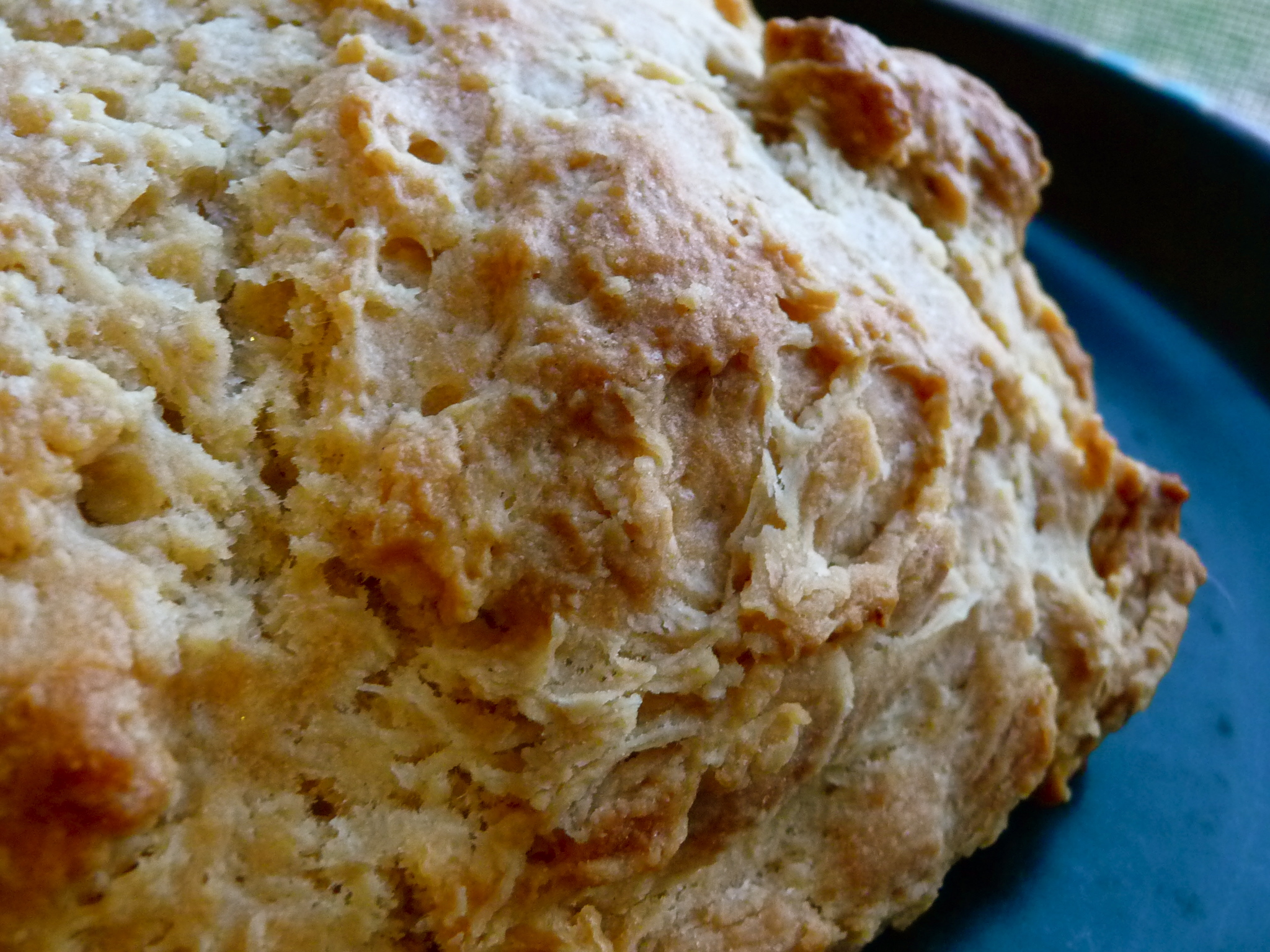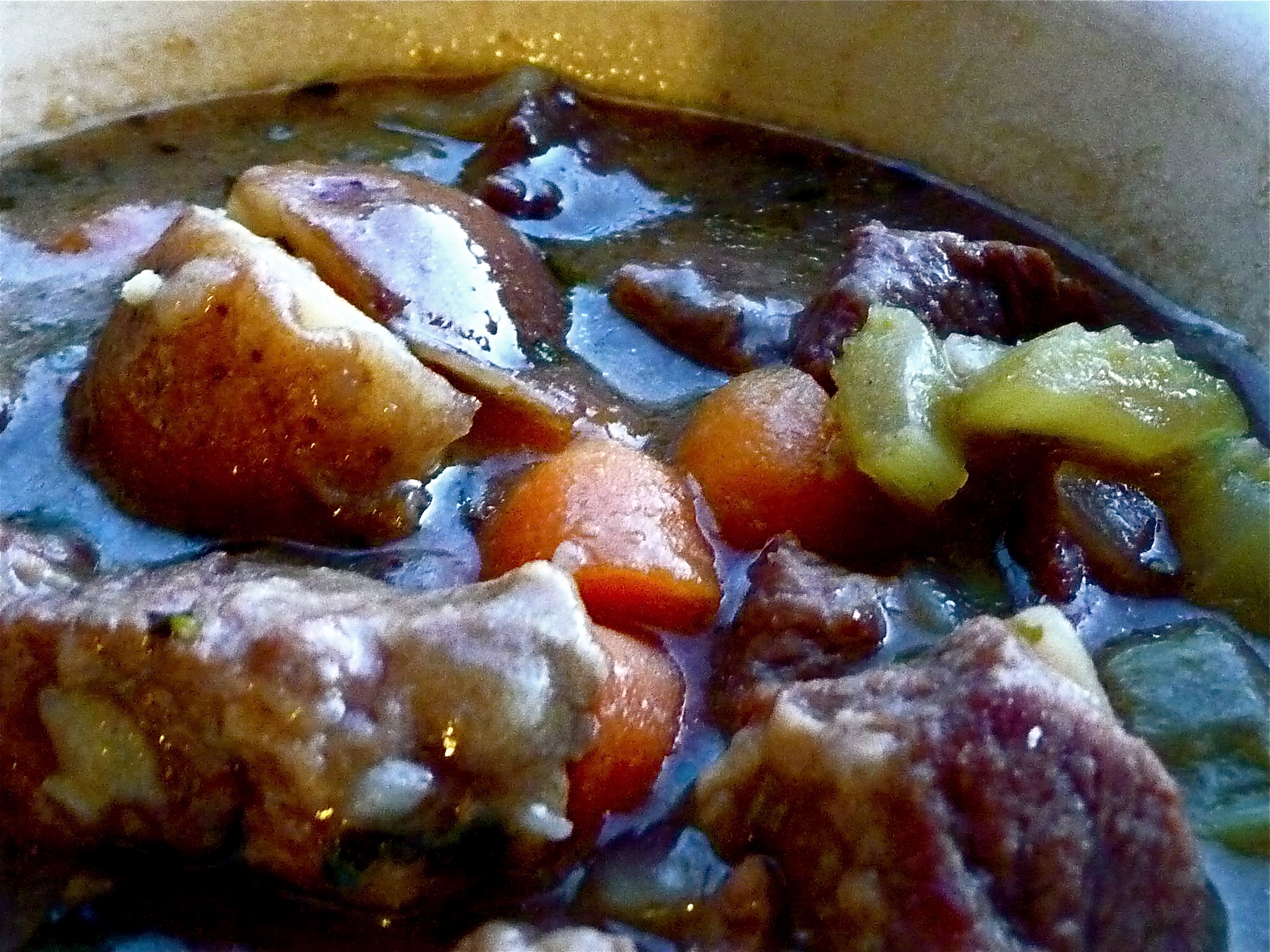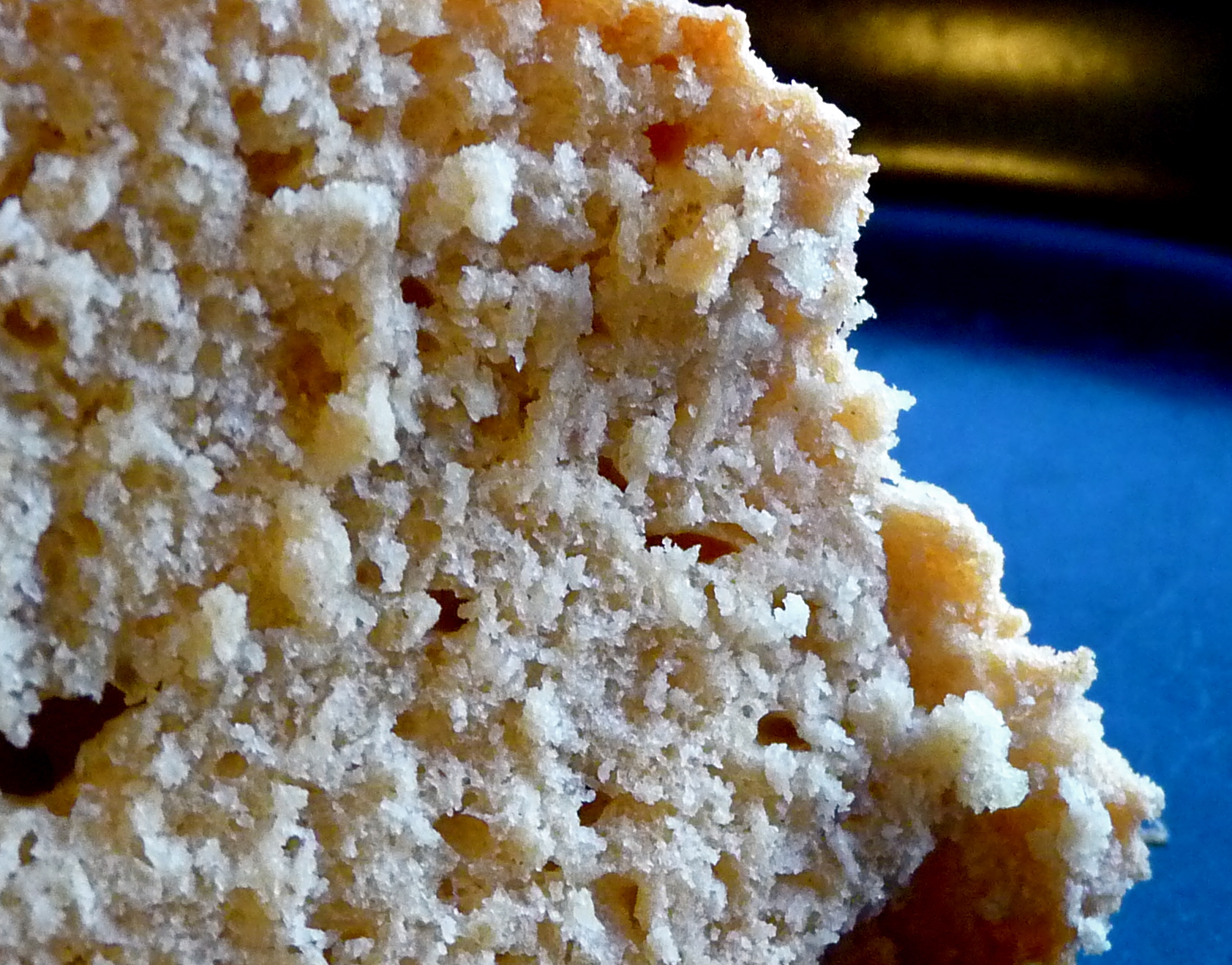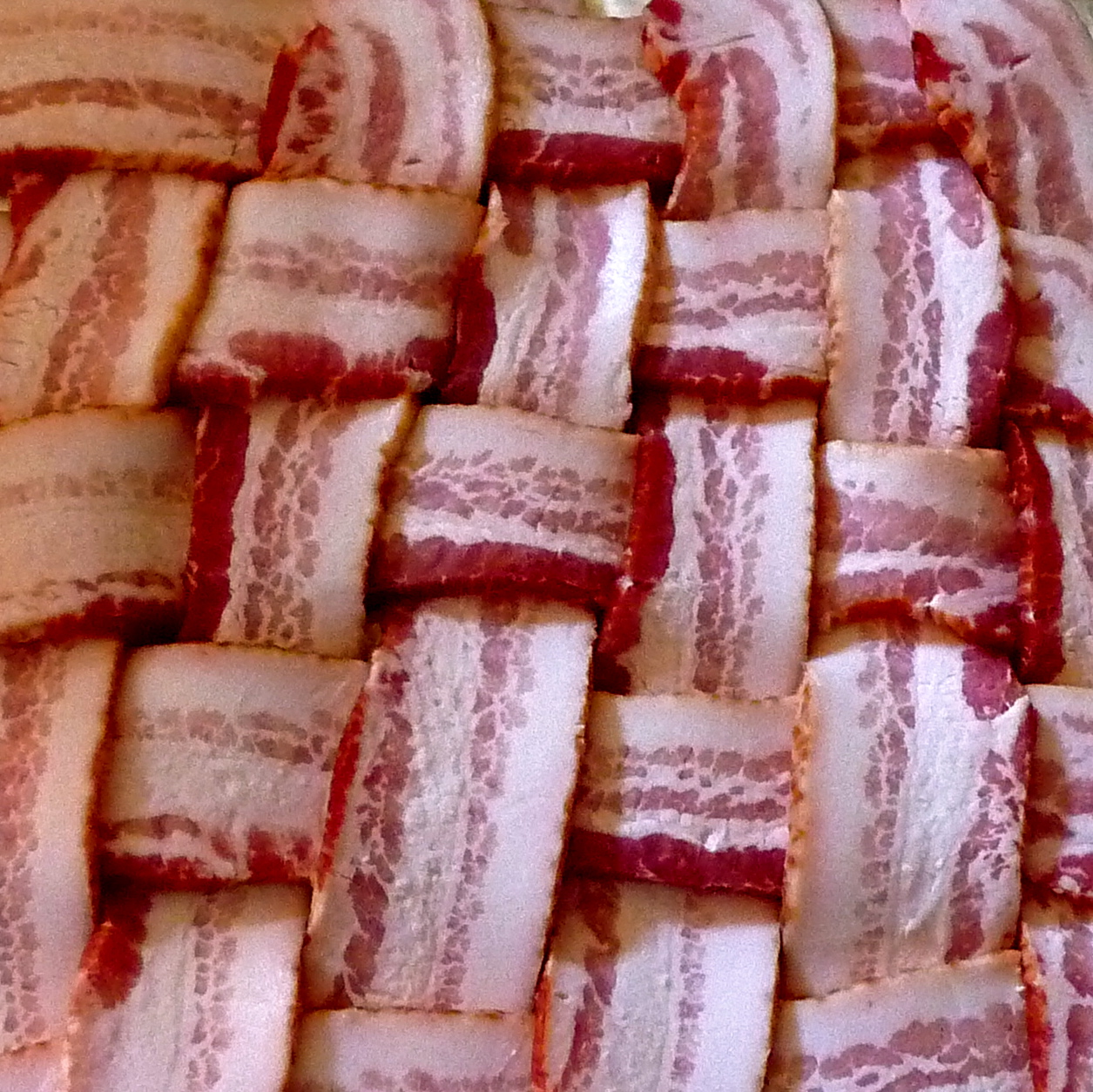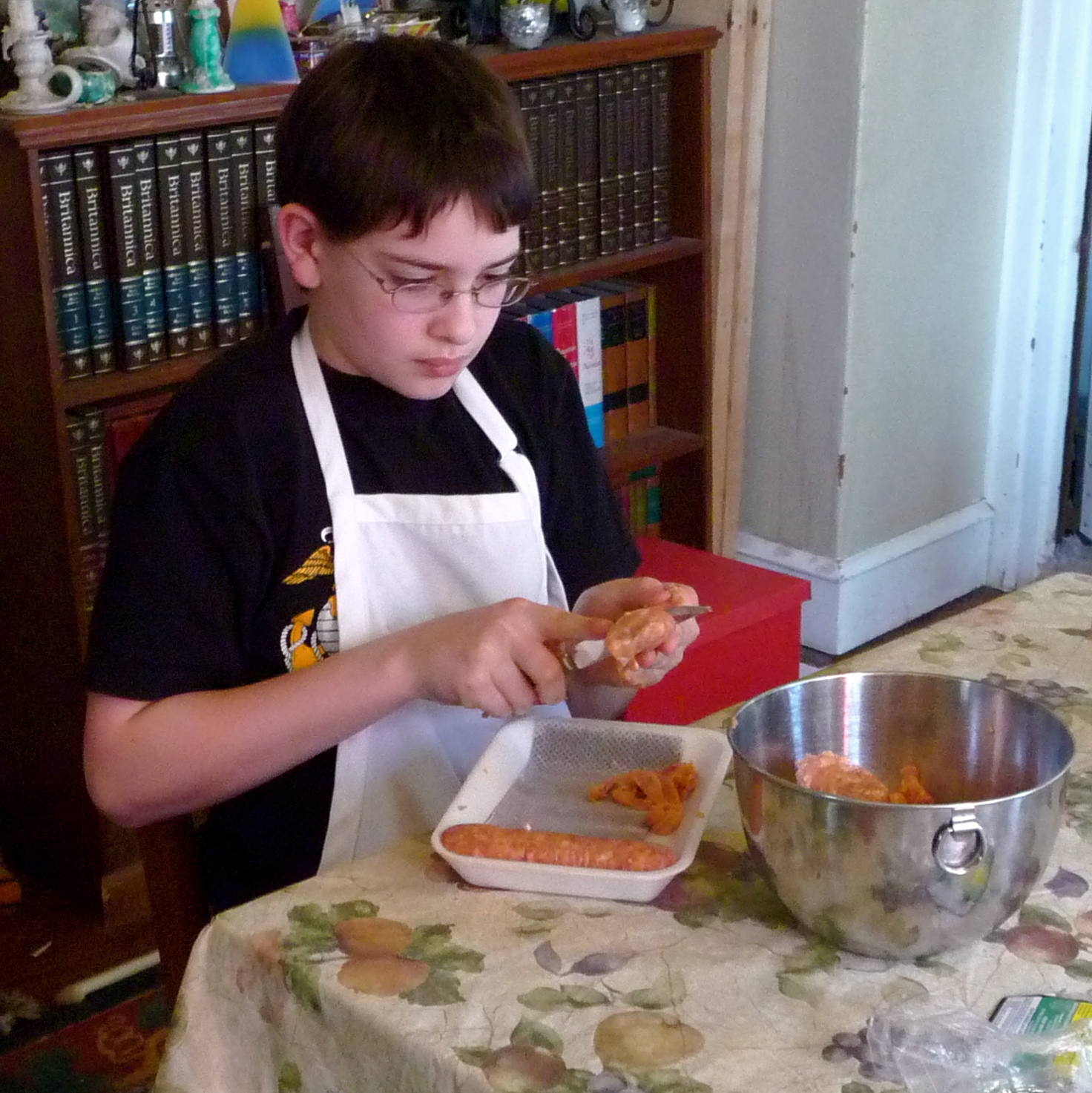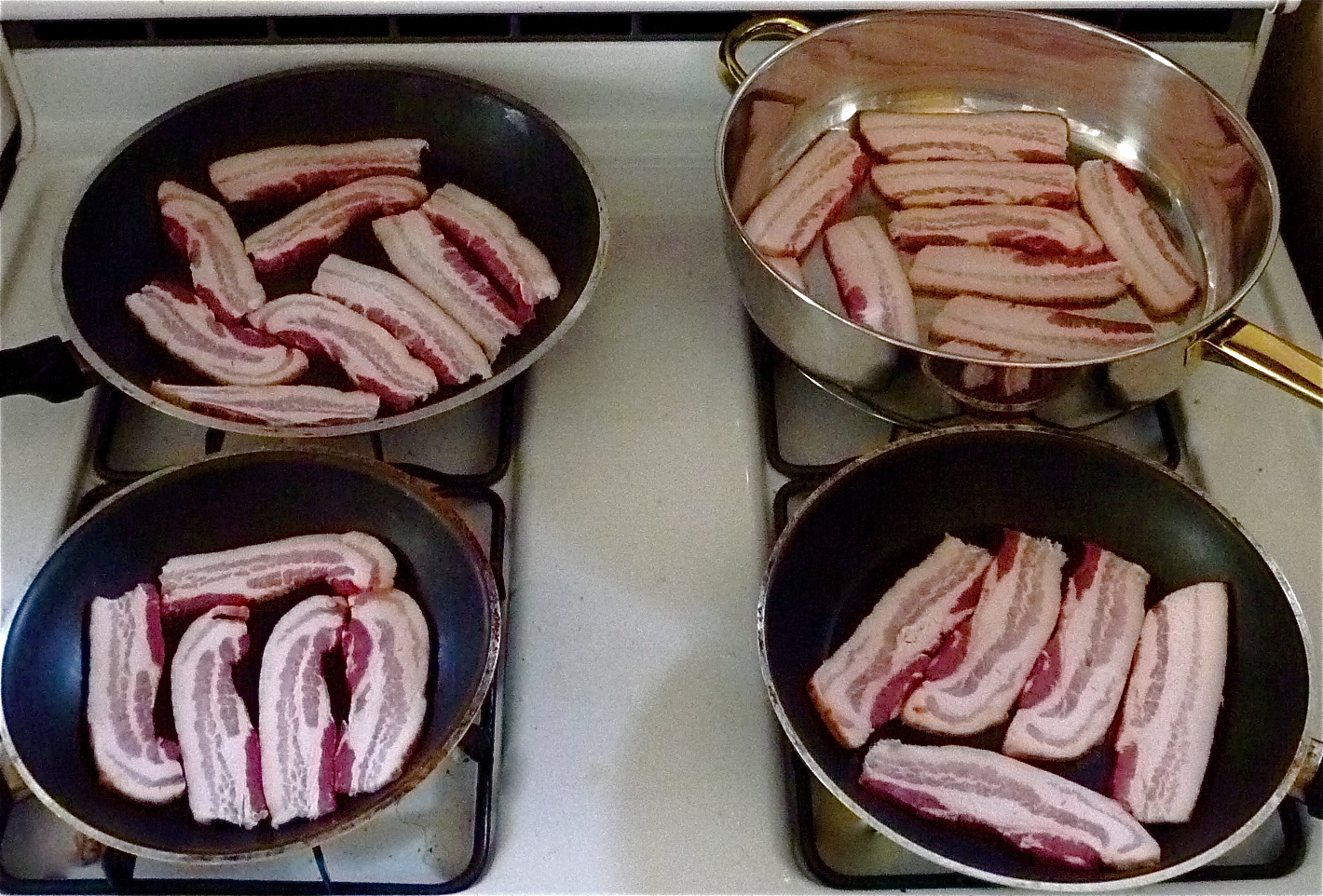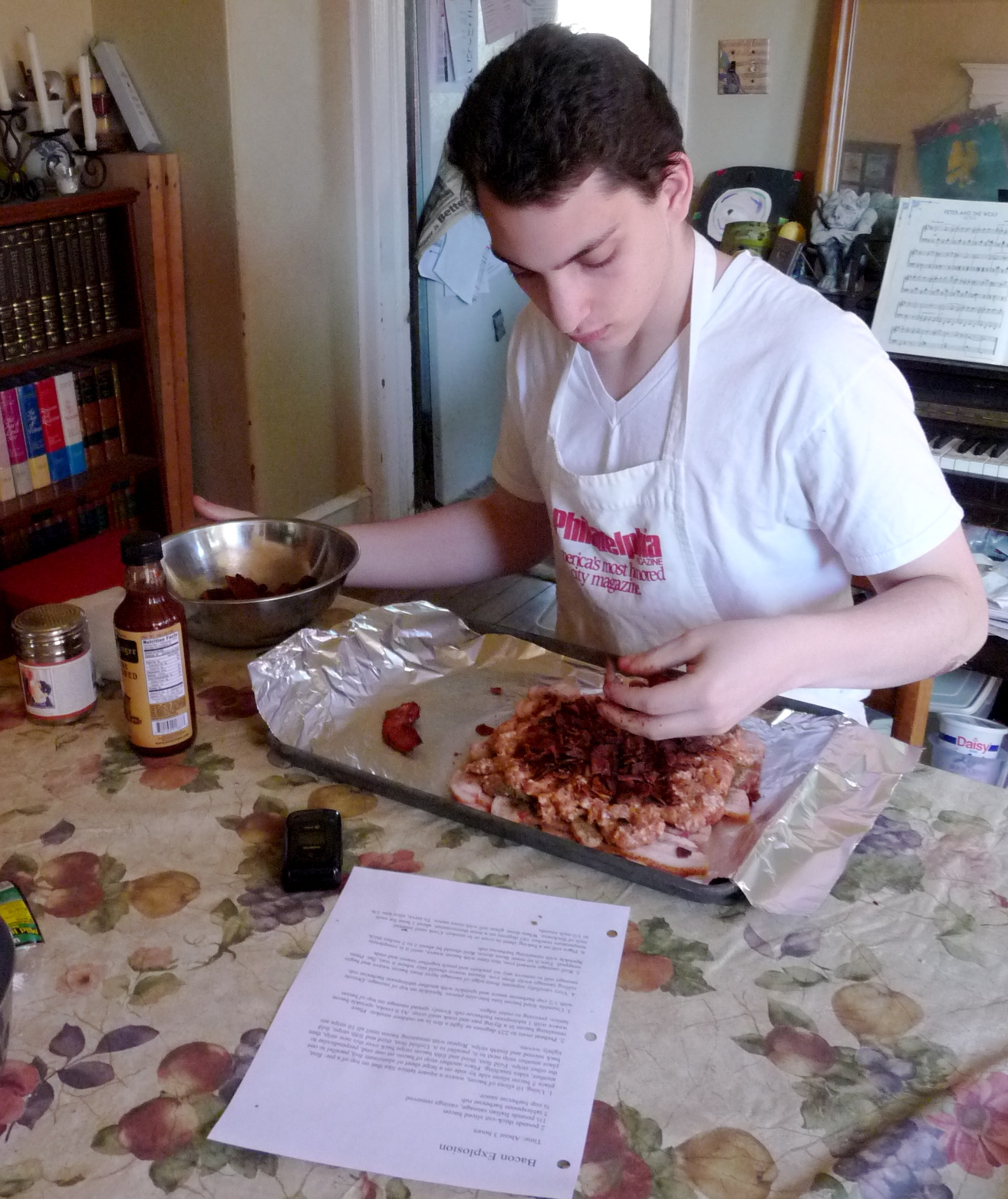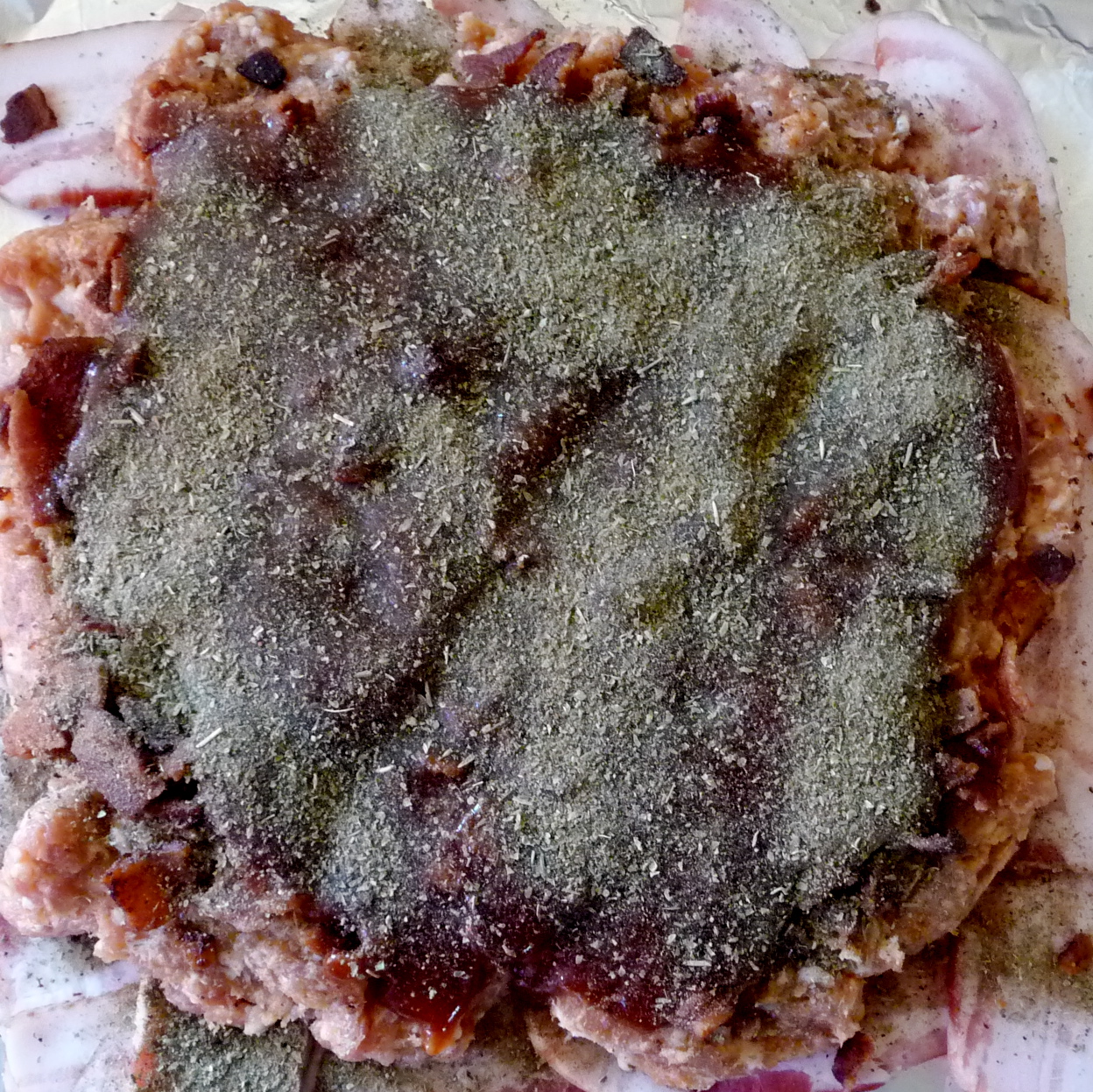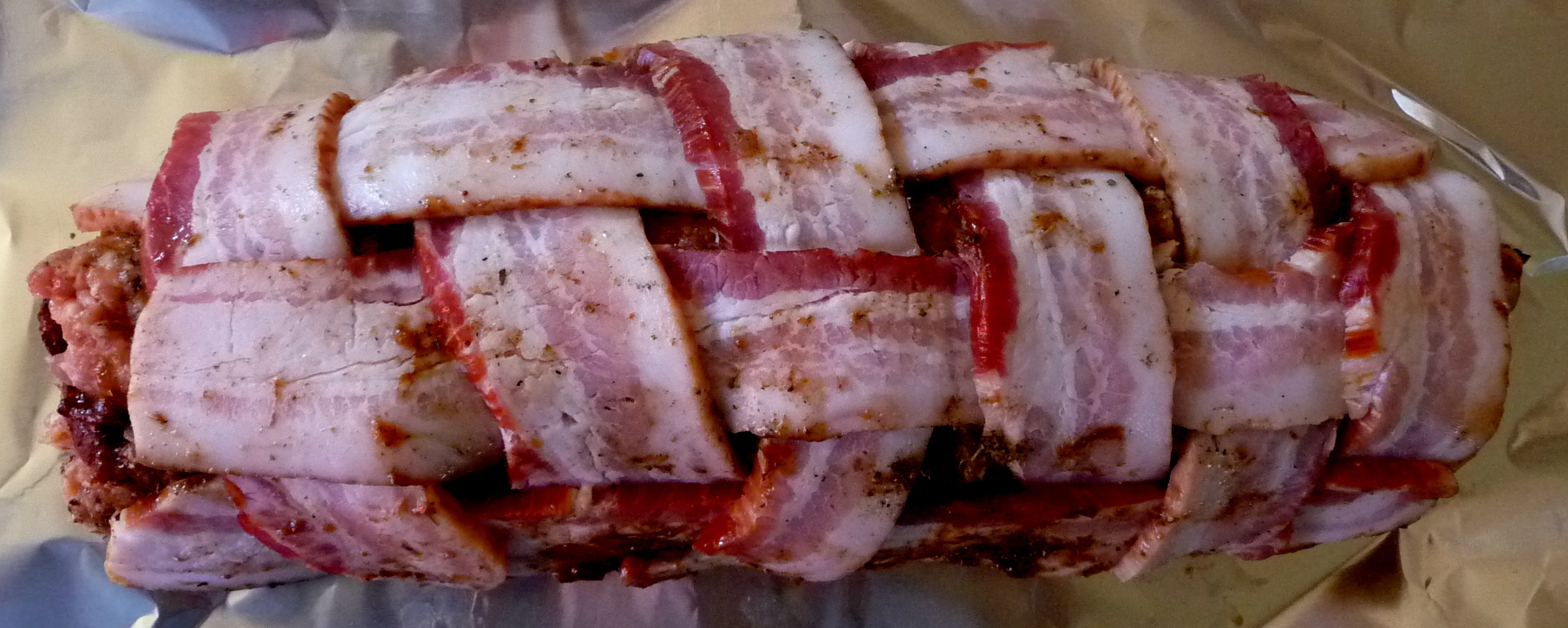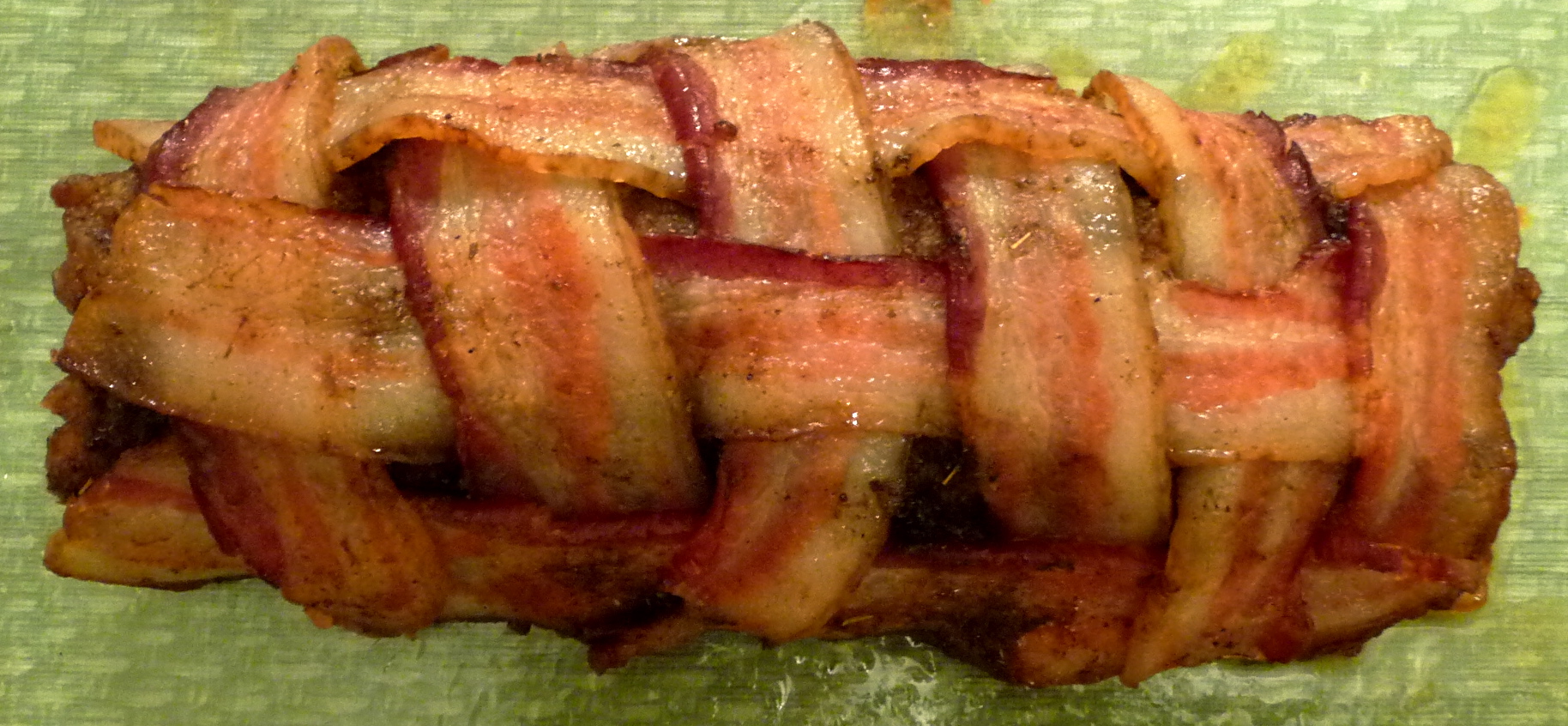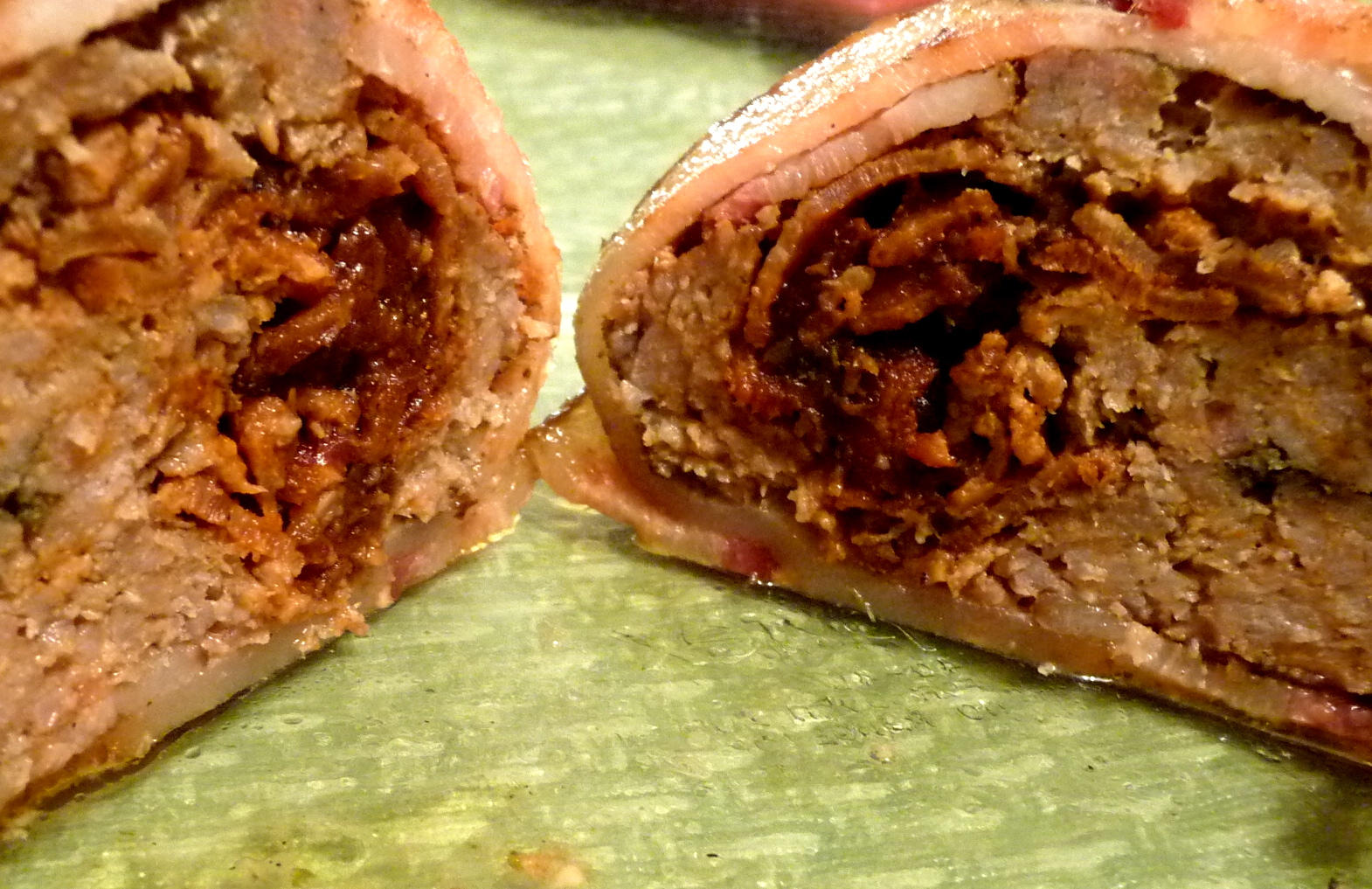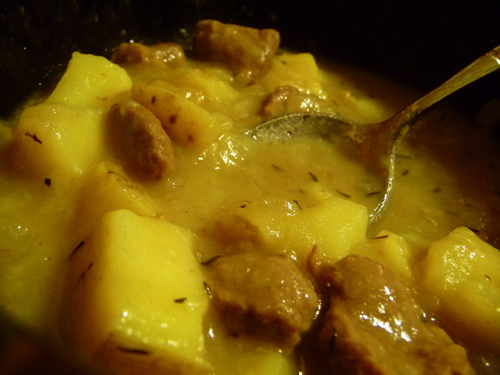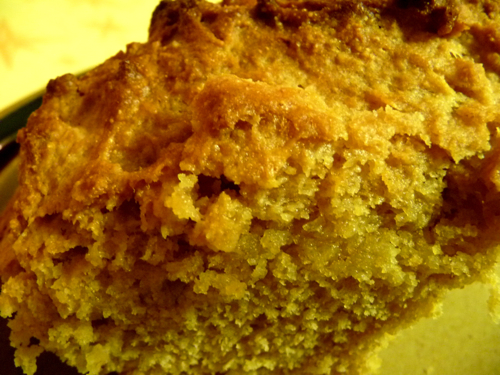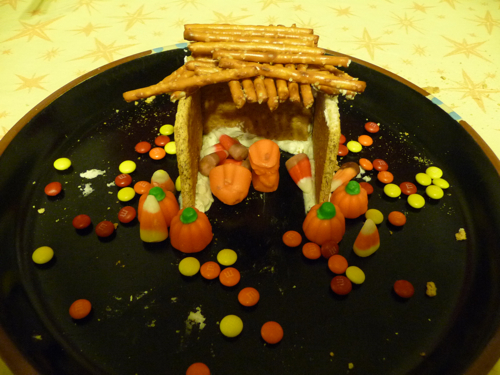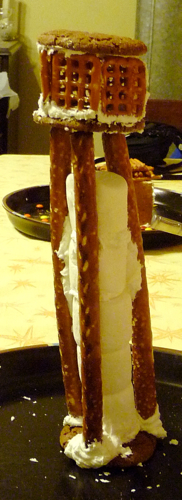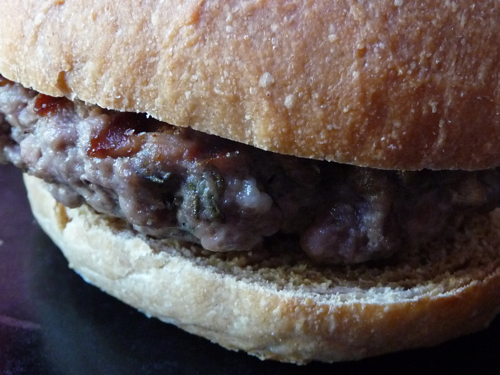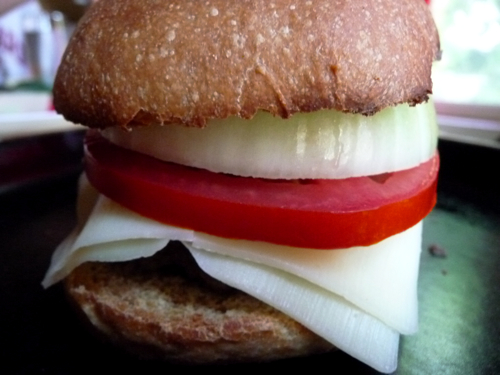The May Daring Bakers’ challenge was hosted by Linda of make life sweeter! and Courtney of Coco Cooks. They chose Apple Strudel from the recipe book Kaffeehaus: Exquisite Desserts from the Classic Cafés of Vienna, Budapest and Prague by Rick Rodgers.
I wasn’t going to do apple, was I?
I thought it was about time #2 Son got to take part in one of these posts, so I let him make the filling. He decided on a mix of ground lamb, mashed potatoes, and onions, which was odd because he has always been a bit uncomfortable about lamb in the past. We went to the farmers market together to get the ingredients, but he did the rest alone. He made the mashed potatoes. He browned the lamb. He chopped and sautéed the onions. It’s so nice having kids who can cook.
I made the dough, and it was much easier than I anticipated. I hate rolling out dough (as I may have mentioned once or a hundred times before), and #1 Son is away for the weekend, so I couldn’t even push it off on him. And this dough has to be stretched tissue-thin, to about 2 feet by 3 feet. Feet! Directly on a tablecloth!
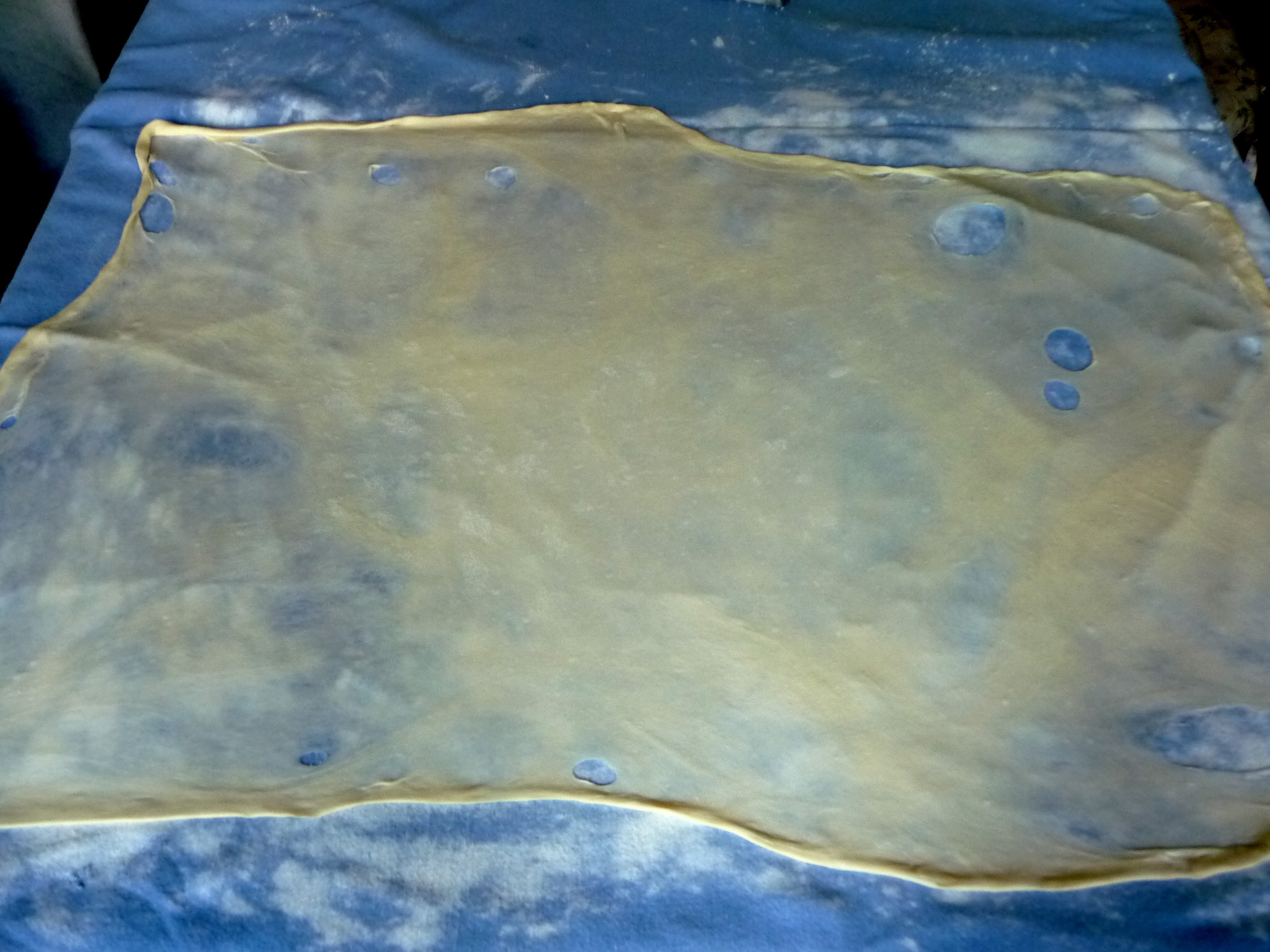

The dough was just a simple bread dough, sans yeast, and after resting for 90 minutes it was silky smooth and handled like a dream. Following the hostesses’ advice, I made a double batch, and it’s a good thing I did: My first attempt wasn’t quite as successful as I’d hoped. I crumpled it up and started again, and I did much better the second time. There were a few holes, but it didn’t matter.
Then I brushed the dough with butter and added #2 Son’s filling (in the size and shape called for in the recipe), then rolled it up. It was so cool — it worked exactly as it was supposed to! That so rarely happens in my kitchen (or, in this case, in my dining room). The dough didn’t stick to the tablecloth even a little. Brushed it with butter again.
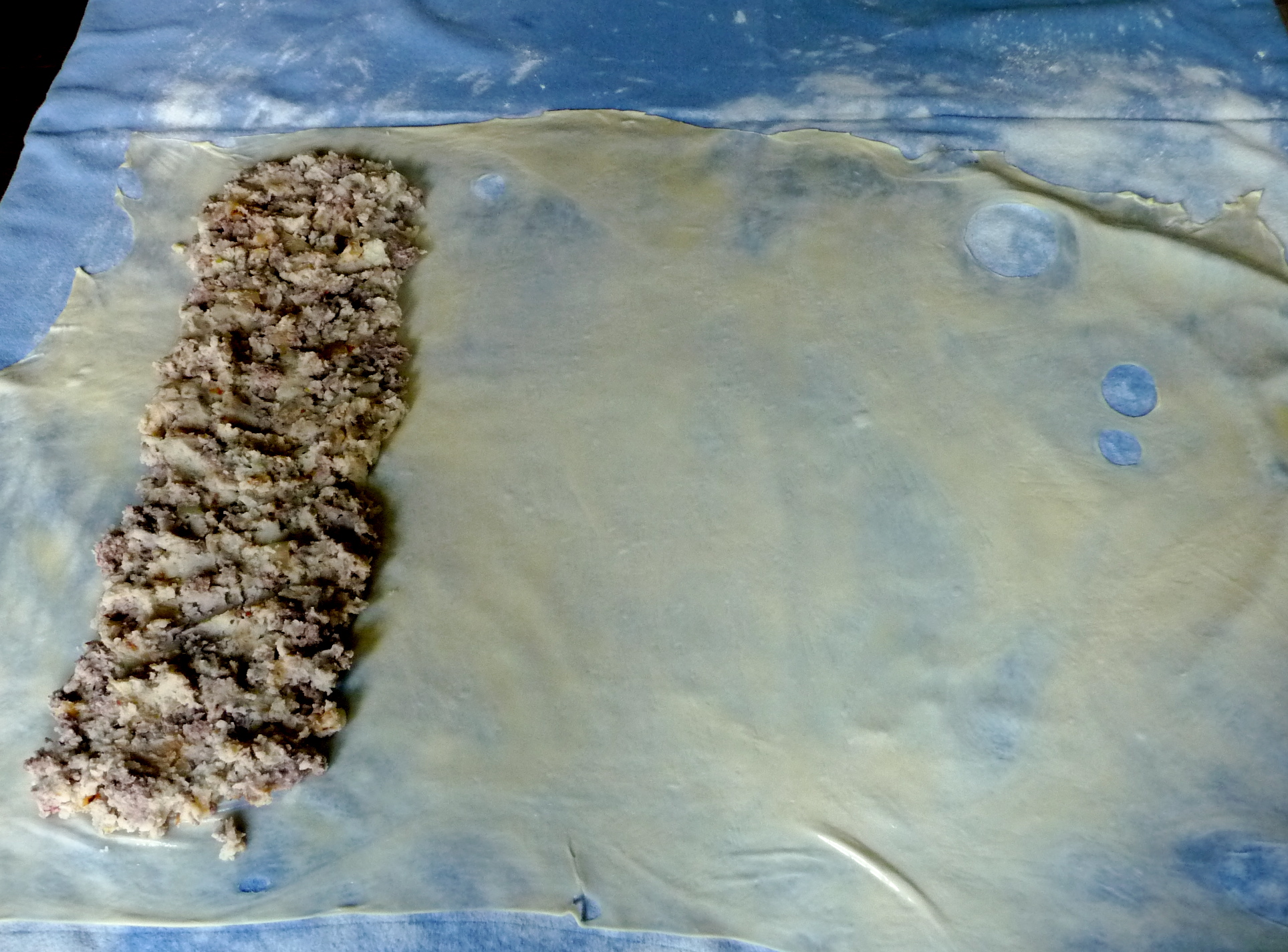
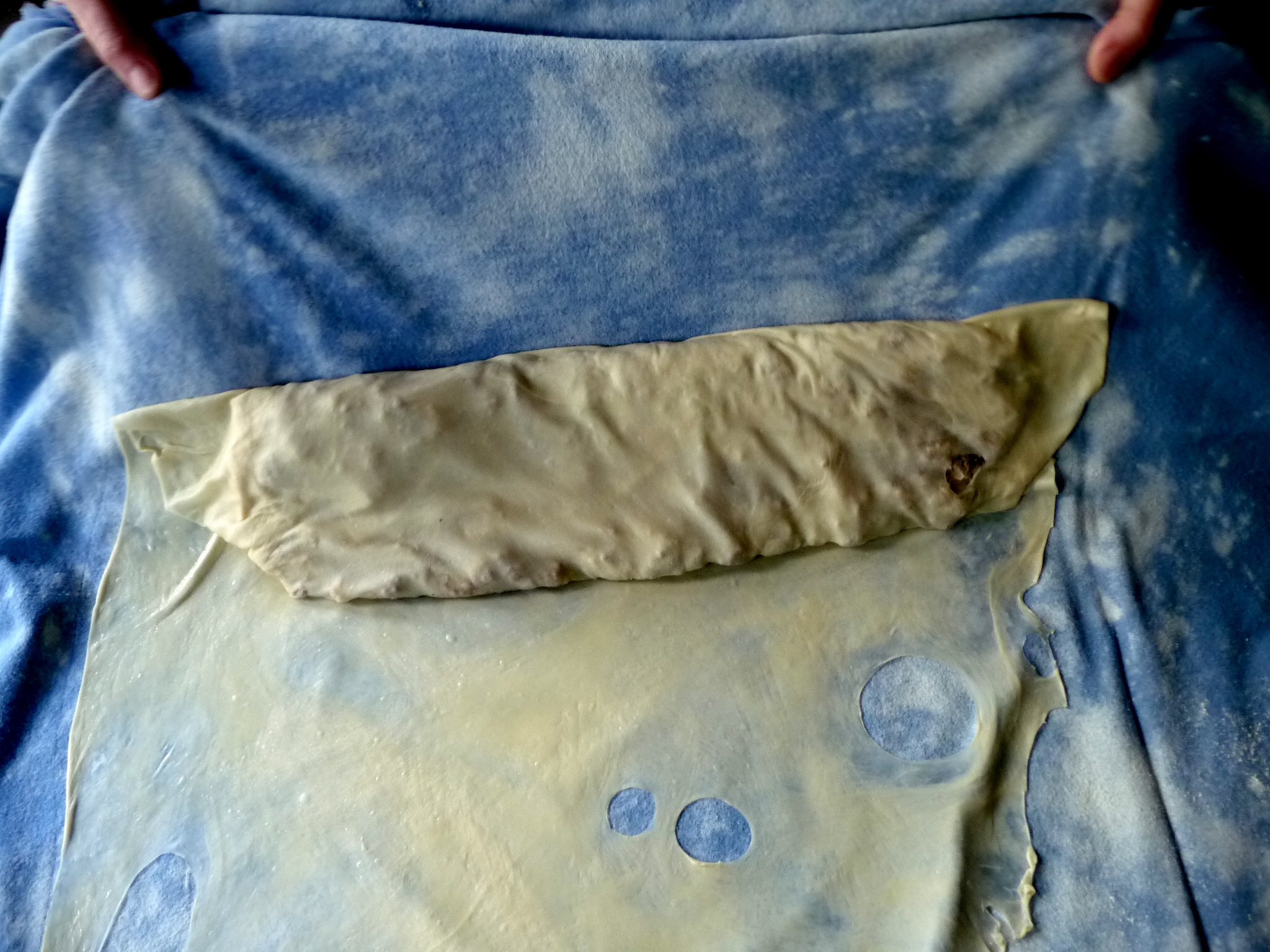
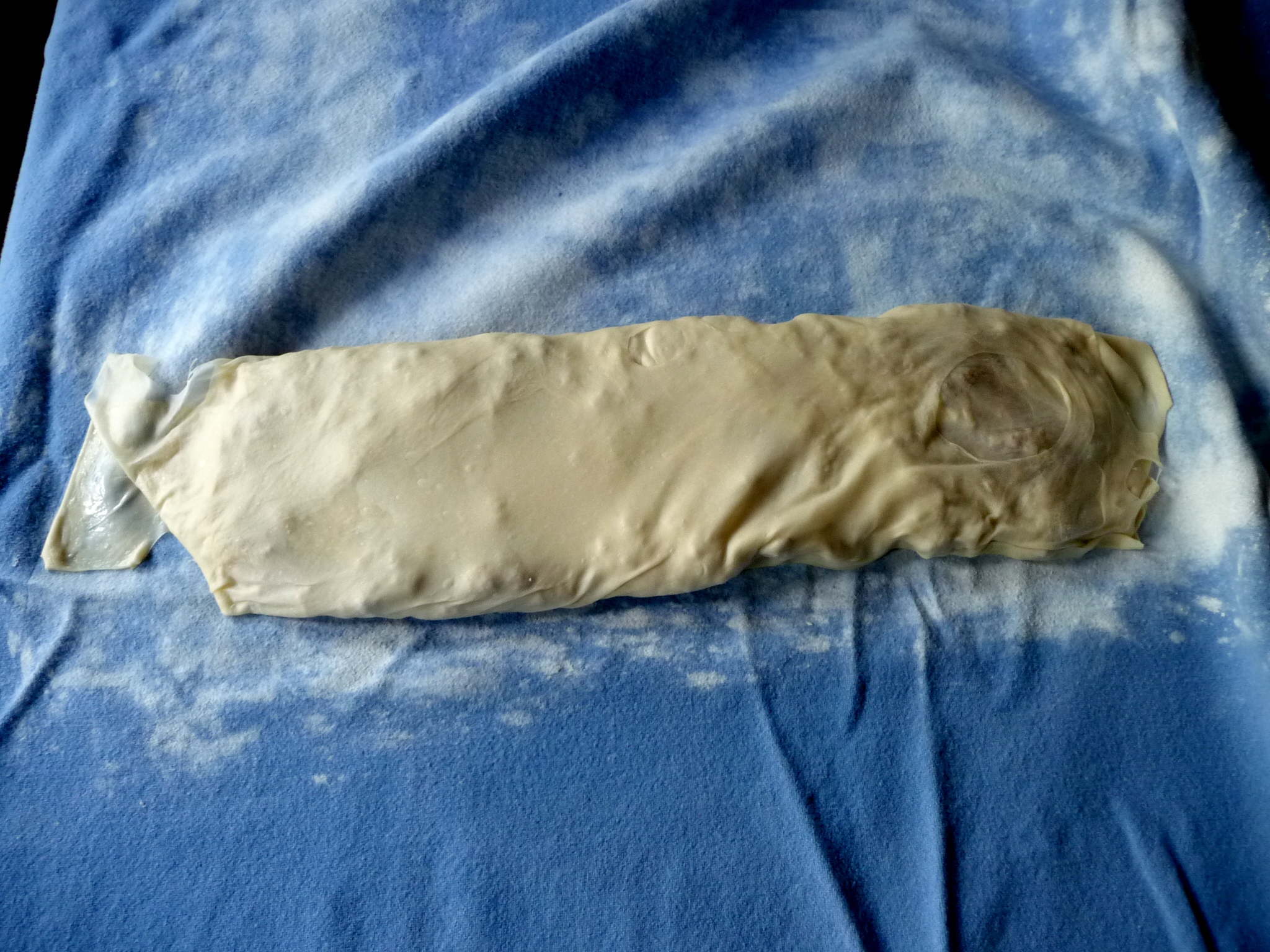
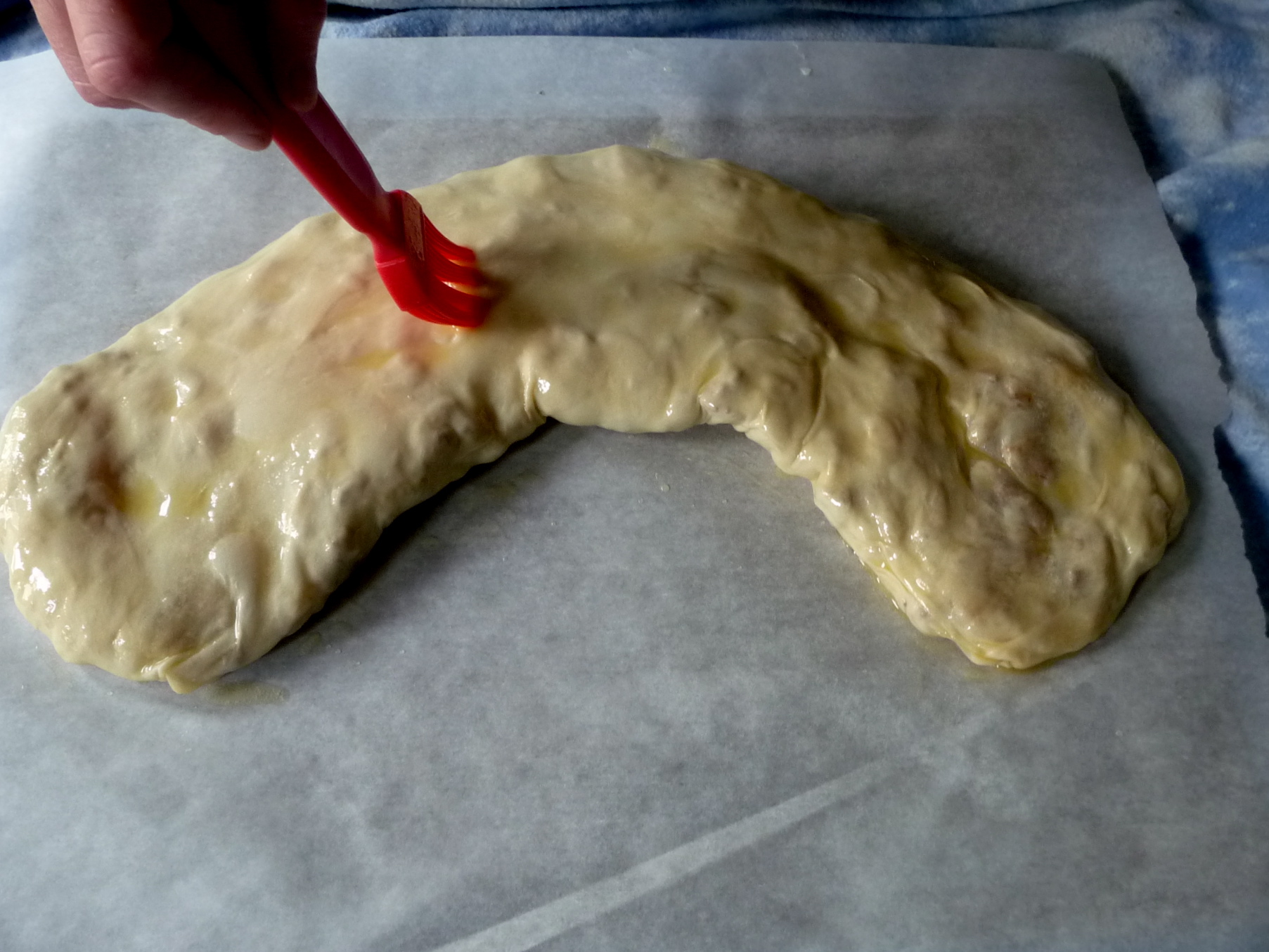
Baked it for a bit longer than the recipe said, about 35 minutes. Did not wait the specified 30 minutes before cutting, because after all, that was for apple filling. Should have waited a bit longer. Very hot.
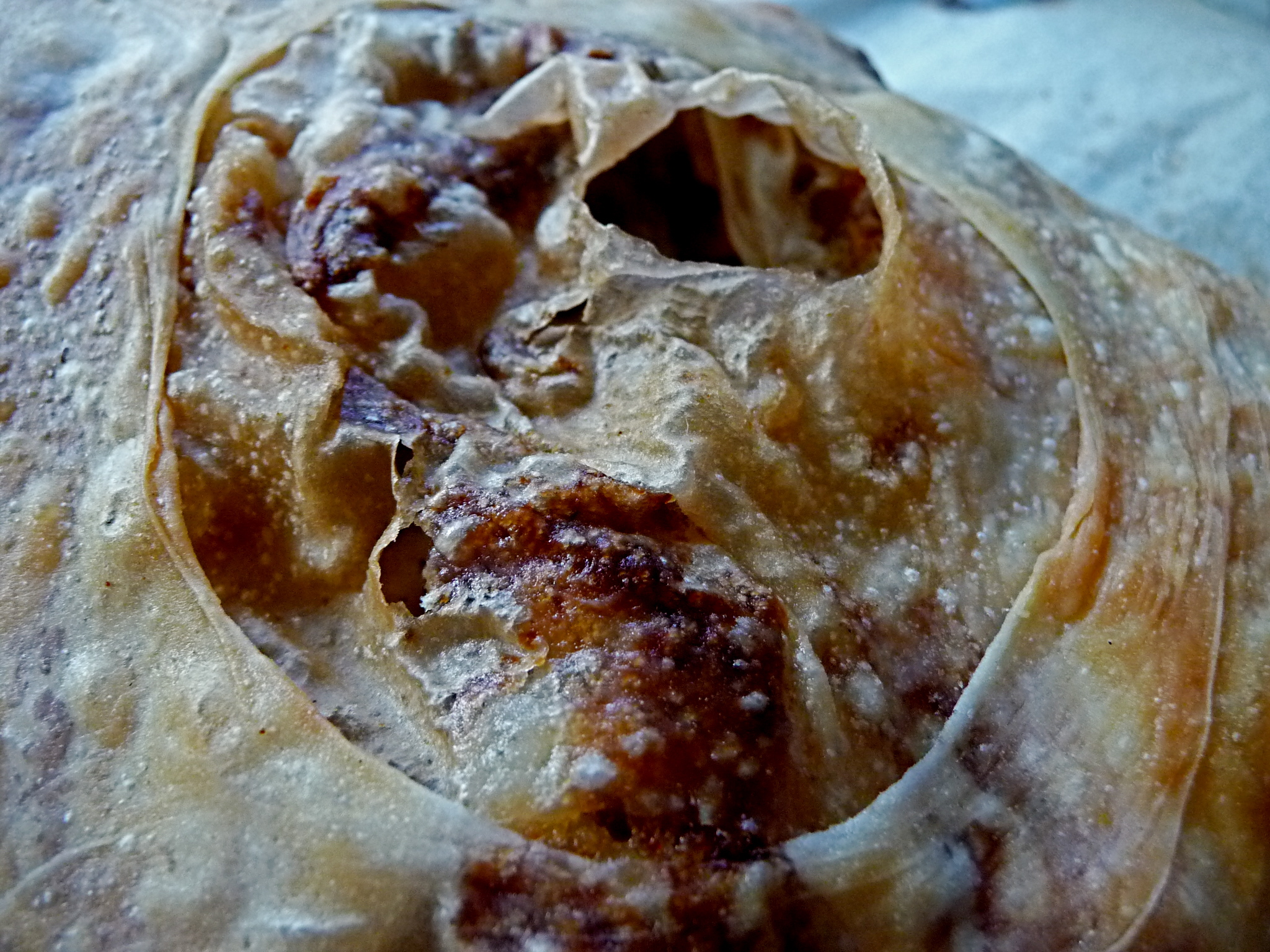
But once we could get it into our waiting maws, it was worth the wait. It was essentially shepherd’s pie in a flaky, flaky crust, but that description doesn’t do it justice. I don’t write well enough to do it justice. Even my usually reliable husband is at a loss for words. But it was really good.
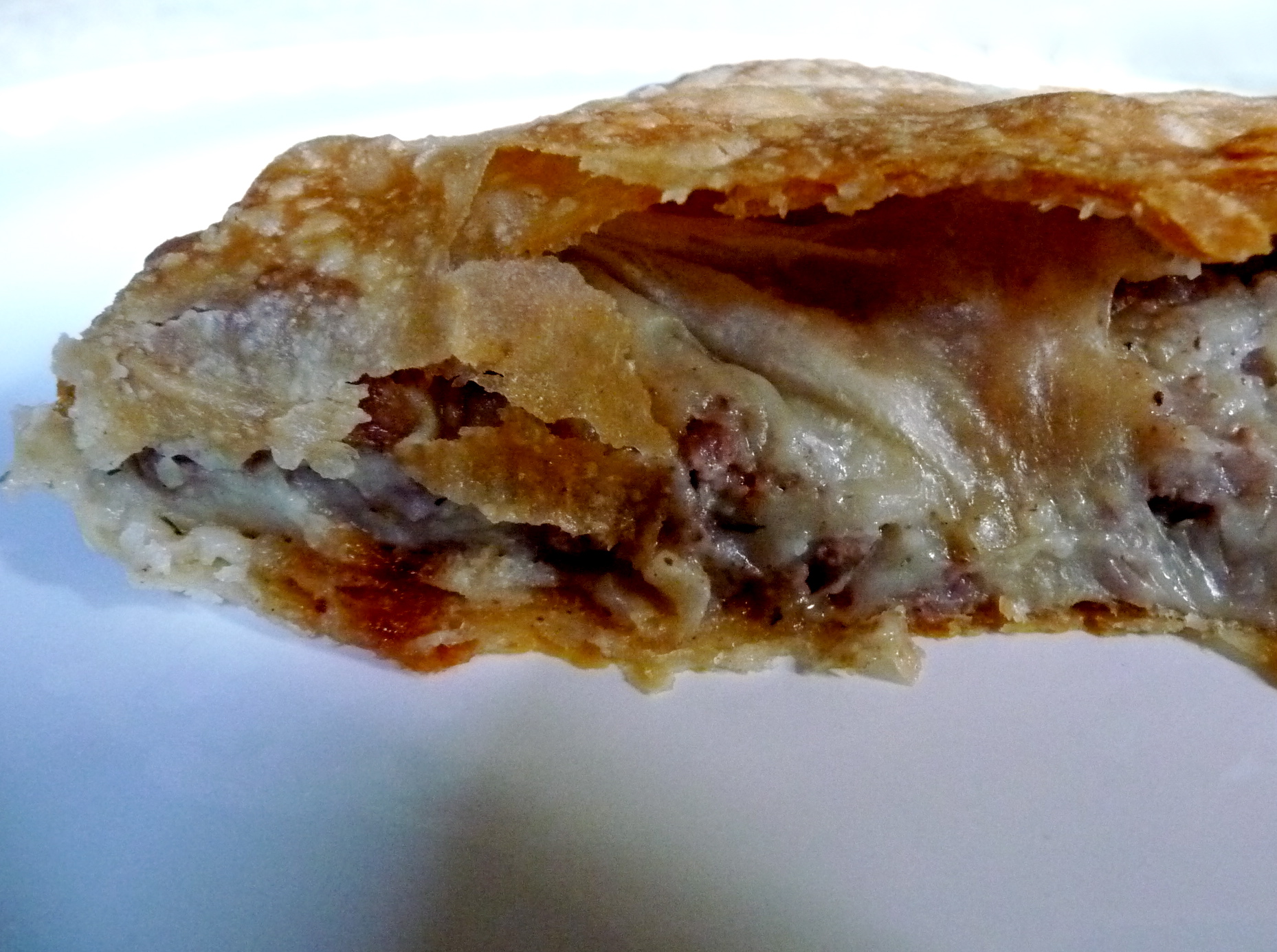
#2 Son: I found my filling quite good. You couldn’t really taste the lamb or the onion over the potato [editor’s note: I didn’t notice that], but the potato was delicious. I think the crust was really good.
Update: Husband ate the leftovers two days later, cold. He called it shepherd’s strudel, and he was pleased.
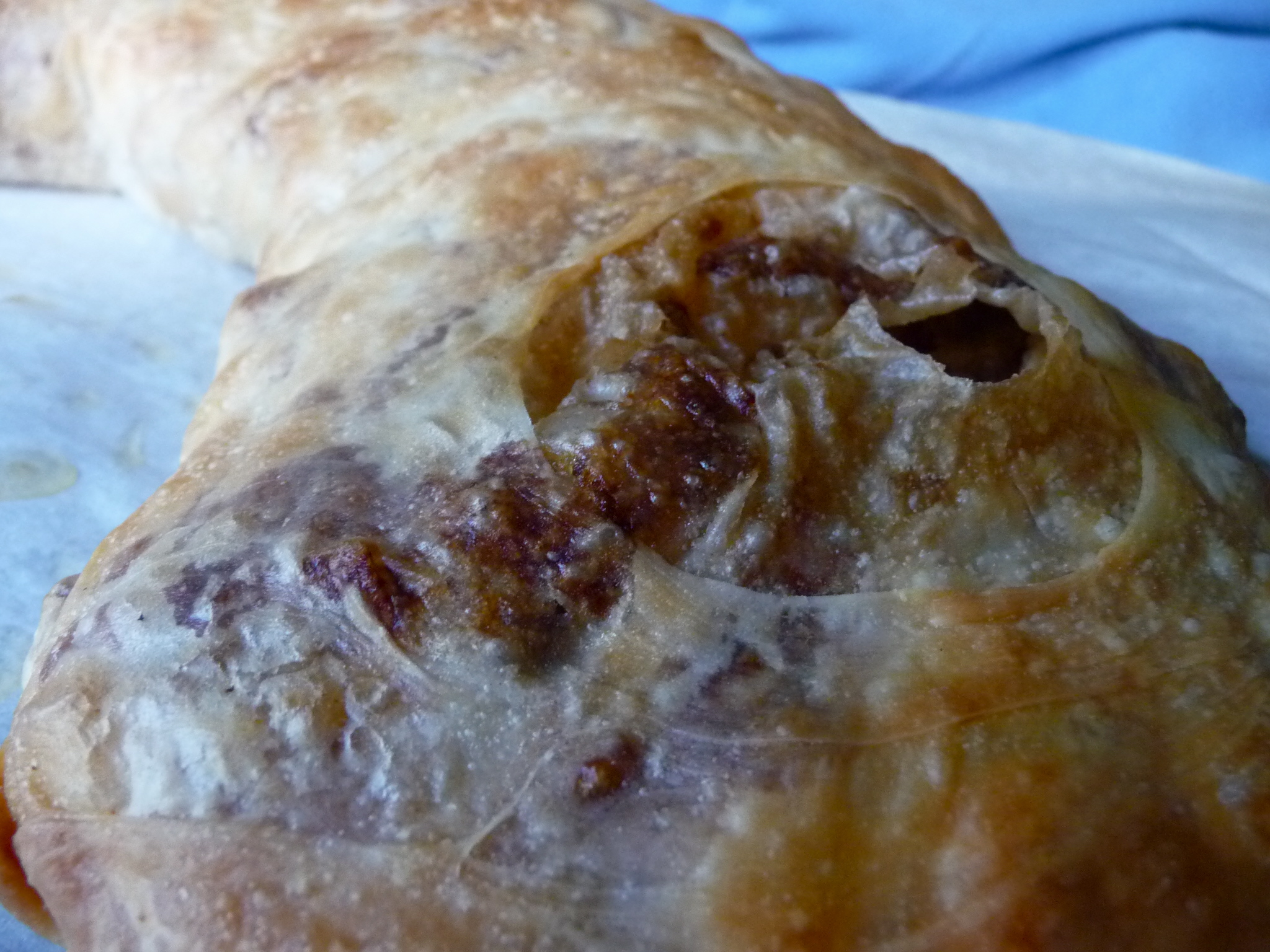
And then I had that sad crumpled ball of dough, and I couldn’t just throw it away. That would have been wrong. So I rolled it out again; I couldn’t get it nearly as big as the other half. I think it wound up about 12 inches by 18 inches. I brushed it with butter, sprinkled it with a mixture of ground almonds, dark brown sugar, and cinnamon, and filled it with chopped milk chocolate and toasted slivered almonds.
That one didn’t come out as pretty, and the crust was much tougher. Guess you can’t roll the dough more than once. But the chocolate was all melty and good. Really, it reminded us all of those lovely rugelach we made last fall. No one minded eating the strudel, tough crust or no.
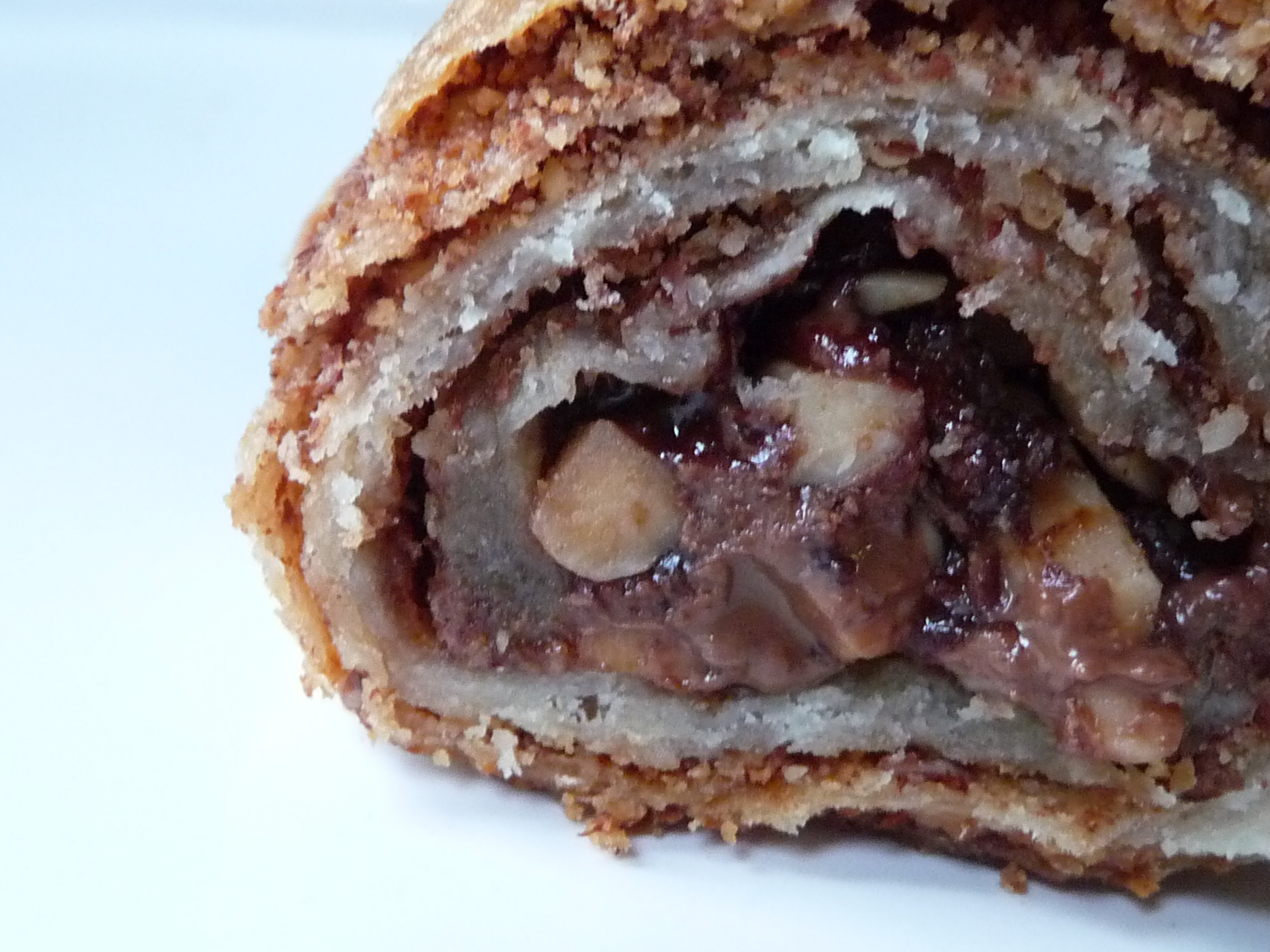
Check out what all the other Daring Bakers did with the strudel — there are sure to be some amazing variations. And if you want to try it yourself (go ahead — it’s easier than you think!), here’s the recipe:
Apple Strudel
from Kaffeehaus: Exquisite Desserts from the Classic Cafés of Vienna, Budapest and Prague by Rick Rodgers
Preparation time: 2 hours 15 minutes to 3 hours 30 minutes
2 tablespoons (30 ml) golden rum
3 tablespoons (45 ml) raisins
¼ teaspoon ground cinnamon
â…“ cup plus 1 tablespoon (80 g) sugar
½ cup (1 stick / 115 g) unsalted butter, melted, divided
1½ cups (350 ml) fresh bread crumbs
strudel dough (recipe below)
½ cup (120 ml, about 60 g) coarsely chopped walnuts
2 pounds (900 g) tart cooking apples, peeled, cored and cut into ¼-inch-thick slices (use apples that hold their shape during baking)
1. Mix the rum and raisins in a bowl. Mix the cinnamon and sugar in another bowl.
2. Heat 3 tablespoons of the butter in a large skillet over medium-high. Add the breadcrumbs and cook whilst stirring until golden and toasted. This will take about 3 minutes. Let it cool completely.
3. Put the rack in the upper third of the oven and preheat the oven to 400°F (200°C). Line a large baking sheet with baking paper (parchment paper). Make the strudel dough as described below. Spread about 3 tablespoons of the remaining melted butter over the dough using your hands (a bristle brush could tear the dough, you could use a special feather pastry brush instead of your hands). Sprinkle the buttered dough with the bread crumbs. Spread the walnuts about 3 inches (8 cm) from the short edge of the dough in a 6-inch-(15cm)-wide strip. Mix the apples with the raisins (including the rum), and the cinnamon sugar. Spread the mixture over the walnuts.
4. Fold the short end of the dough onto the filling. Lift the tablecloth at the short end of the dough so that the strudel rolls onto itself. Transfer the strudel to the prepared baking sheet by lifting it. Curve it into a horseshoe to fit. Tuck the ends under the strudel. Brush the top with the remaining melted butter.
5. Bake the strudel for about 30 minutes or until it is deep golden brown. Cool for at least 30 minutes before slicing. Use a serrated knife and serve either warm or at room temperature. It is best on the day it is baked.
Strudel dough
1â…“ cups (200 g) unbleached flour
â…› teaspoon salt
7 tablespoons (105 ml) water, plus more if needed
2 tablespoons (30 ml) vegetable oil, plus additional for coating the dough
½ teaspoon cider vinegar
1. Combine the flour and salt in a stand-mixer fitted with the paddle attachment. Mix the water, oil and vinegar in a measuring cup. Add the water/oil mixture to the flour with the mixer on low speed. You will get a soft dough. Make sure it is not too dry, add a little more water if necessary. Take the dough out of the mixer. Change to the dough hook. Put the dough ball back in the mixer. Let the dough knead on medium until you get a soft dough ball with a somewhat rough surface.
2. Take the dough out of the mixer and continue kneading by hand on an unfloured work surface. Knead for about 2 minutes. Pick up the dough and throw it down hard onto your working surface occasionally.
Shape the dough into a ball and transfer it to a plate. Oil the top of the dough ball lightly. Cover the ball tightly with plastic wrap. Allow to stand for 30-90 minutes (longer is better).
3. It would be best if you have a work area that you can walk around on all sides like a 36 inch (90 cm) round table or a work surface of 23 x 38 inches (60 x 100 cm). Cover your working area with table cloth, dust it with flour and rub it into the fabric. Put your dough ball in the middle and roll it out as much as you can. Pick the dough up by holding it by an edge. This way the weight of the dough and gravity can help stretching it as it hangs. Using the back of your hands to gently stretch and pull the dough. You can use your forearms to support it.
4. The dough will become too large to hold. Put it on your work surface. Leave the thicker edge of the dough to hang over the edge of the table. Place your hands underneath the dough and stretch and pull the dough thinner using the backs of your hands. Stretch and pull the dough until it’s about 2 feet (60 cm) wide and 3 feet (90 cm) long, it will be tissue-thin by this time. Cut away the thick dough around the edges with scissors. The dough is now ready to be filled.
Tips
- The ingredients are cheap, so we would recommend making a double batch of the dough. That way you can practice the pulling and stretching of the dough with the first batch and if it doesn’t come out like it should you can use the second batch to give it another try.
- The tablecloth can be cotton or polyster.
- Before pulling and stretching the dough, remove your jewelry from hands and wrists, and wear short sleeves.
- To make it easier to pull the dough, you can use your hip to secure the dough against the edge of the table.
- A few small holes in the dough is not a problem as the dough will be rolled, making (most of) the holes invisible.
